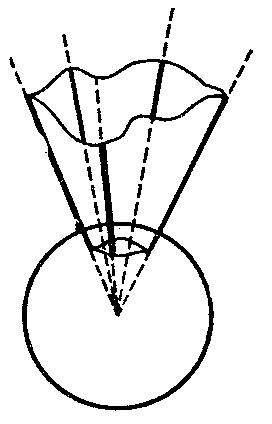Polyhedral angle
From Encyclopedia of Mathematics
The printable version is no longer supported and may have rendering errors. Please update your browser bookmarks and please use the default browser print function instead.
The infinite convex region in space bounded by a sequence of rays (emanating from one point, the vertex) and the angular regions between adjacent pairs of rays; in other words, a baseless pyramid. The angular regions are called the faces. A polyhedral angle is called regular if all its linear angles are equal and all its dihedral angles are equal. The measure of a polyhedral angle is the area bounded by the spherical polygon (see Fig.) which is obtained by the intersection of the faces of the polyhedral angle with a sphere of unit radius with centre at the vertex of the polyhedral angle.

Figure: p073610a
How to Cite This Entry:
Polyhedral angle. Encyclopedia of Mathematics. URL: http://encyclopediaofmath.org/index.php?title=Polyhedral_angle&oldid=15055
Polyhedral angle. Encyclopedia of Mathematics. URL: http://encyclopediaofmath.org/index.php?title=Polyhedral_angle&oldid=15055